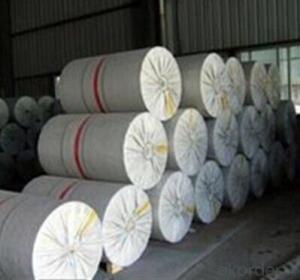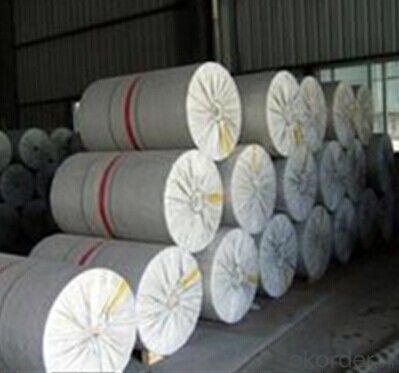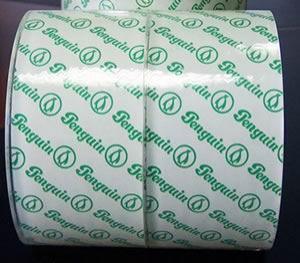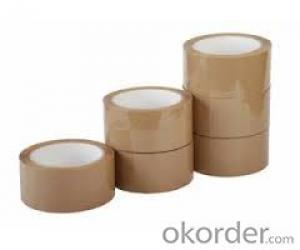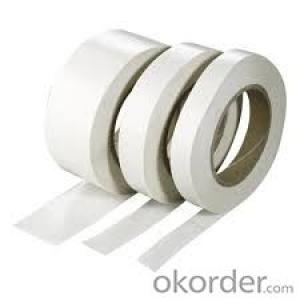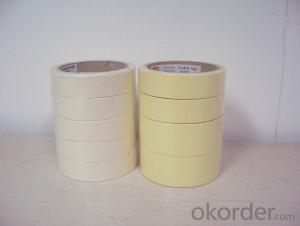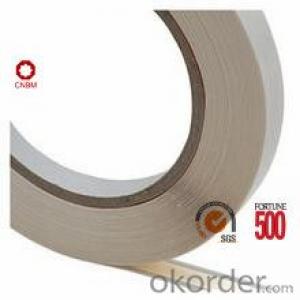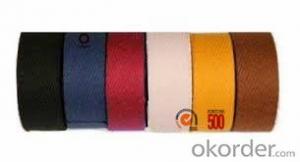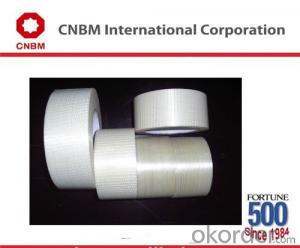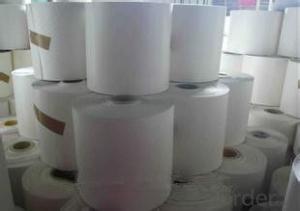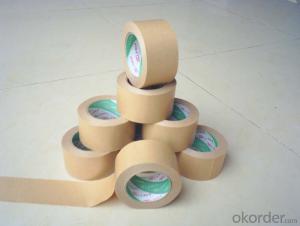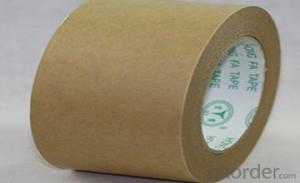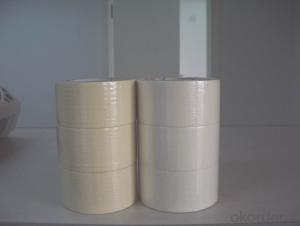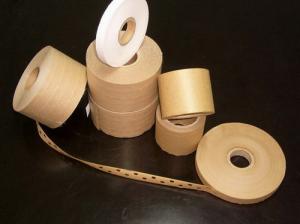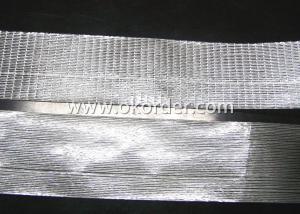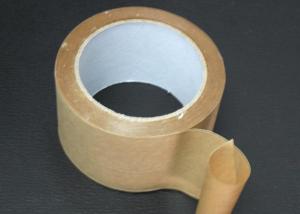eBay Branded White Self Adhesive Kraft Paper Gummed Tape
- Loading Port:
- China Main Port
- Payment Terms:
- TT OR LC
- Min Order Qty:
- -
- Supply Capability:
- -
OKorder Service Pledge
OKorder Financial Service
You Might Also Like
Packaging & Delivery
Packaging Detail: | 1Roll/Carton |
Delivery Detail: | Within3days |
Specifications
This tape is Washi(Japanese flat paper) uniformly coated with acrylic adhesive.This is just the right tape for paint masking.
DESCRIPTION
This tape is Washi(Japanese flat paper) uniformly coated with acrylic adhesive.
This is just the right tape for paint masking.
CONSTRUCTION
Backing : Yellow Washi(Japanese flat paper)
Adhesive : Pressure sensitive acrylic adhesive
APPLICATION
Masking for a boundary line when painting
Holding masking paper and cure sheet
For the use of general application ; holding, bundling, and so on
GENERAL INFORMATIONS
1. This tape will not give adhesive residue and not change color up to 150 for 30 minutes.
This tape does not break when peeling off, but can be easily torn by hand.
2. The back side of this tape will not repel the paints.
3. This tape is designed to give an excellent paint break line.
- Q: Can packaging tape be used for sealing plastic toys?
- Indeed, one can utilize packaging tape to seal plastic toys. Engineered to possess strength and adhesive properties, packaging tape proves itself as an excellent choice for securing and sealing diverse materials, including plastic. By proficiently holding together the various components of a plastic toy, it guarantees the toy's preservation. Nonetheless, it is crucial to acknowledge that packaging tape may not possess the same visual appeal as other specialized tapes crafted exclusively for toy packaging, such as clear tape or decorative washi tape.
- Q: Does packaging tape come in different eco-friendly options?
- Different options are available for eco-friendly packaging tape. Manufacturers have introduced alternatives in response to the growing awareness of the environmental impact caused by traditional packaging materials. These alternatives include packaging tapes made from recycled materials or materials that can biodegrade. Recycled packaging tapes are often made using post-consumer waste, thereby reducing the consumption of new resources. Biodegradable packaging tapes are designed to naturally decompose over time, minimizing their impact on the environment. Furthermore, some packaging tapes utilize water-based adhesives instead of solvent-based ones, thereby further reducing their ecological footprint. These eco-friendly options allow businesses and individuals to select packaging tapes that align with their sustainability goals, while still ensuring secure packaging and shipping.
- Q: Can packaging tape be used for mailing packages?
- Yes, packaging tape can be used for mailing packages. It is commonly used to secure and seal packages, ensuring that they remain intact during transit.
- Q: Can packaging tape be used for sealing ceramic items?
- Yes, packaging tape can be used for sealing ceramic items. Packaging tape is designed to be strong and durable, making it suitable for securing and sealing various materials, including ceramics. However, it is important to note that packaging tape may not provide the same level of protection as specialized ceramic sealants or adhesives. If you are looking for a more secure and long-lasting seal, it is recommended to use a ceramic-specific adhesive or sealant that is designed to withstand the unique properties of ceramics, such as temperature changes or moisture exposure.
- Q: Can packaging tape be used for sealing packages with medical or pharmaceutical products?
- Indeed, packaging tape can certainly serve as a means to seal packages containing medical or pharmaceutical items. Nonetheless, it is crucial to take into account the precise requirements and regulations pertaining to packaging within the medical and pharmaceutical sectors. Such industries often uphold rigorous standards concerning packaging materials, aiming to guarantee the safety, soundness, and adherence to regulatory guidelines of the products. Consequently, it is advisable to opt for packaging tape specifically formulated and authorized for use in medical or pharmaceutical contexts. These tapes are typically composed of moisture-resistant and tamper-proof materials, ensuring a robust seal to safeguard the package's contents. By utilizing approved packaging tape, the quality and integrity of medical or pharmaceutical products can be preserved throughout storage and transportation.
- Q: Does packaging tape come in different finishes or textures for aesthetic purposes?
- Yes, packaging tape does come in different finishes or textures for aesthetic purposes. While the primary function of packaging tape is to securely seal boxes and packages, manufacturers have recognized the importance of aesthetics in packaging. As a result, they have developed packaging tapes with various finishes and textures to meet different aesthetic preferences. Some packaging tapes come in glossy finishes, which can give a more polished and professional look to the package. These tapes often have a smooth and shiny surface that reflects light, making the package appear more visually appealing. Glossy packaging tapes are commonly used in industries that require a high-end presentation, such as luxury goods or high-quality products. On the other hand, there are also packaging tapes with matte or satin finishes. These tapes have a more subtle and refined appearance, providing a sophisticated look to the package. Matte or satin tapes are often favored in industries that value a more subtle and understated aesthetic, such as cosmetics or boutique products. Apart from finishes, packaging tape can also come in different textures. For example, some tapes have a textured or patterned surface, which adds a tactile element to the packaging. These tapes can have embossed patterns, such as dots, stripes, or even company logos, which can enhance the overall visual appeal and uniqueness of the package. In summary, packaging tape does come in different finishes or textures for aesthetic purposes. Whether it is a glossy, matte, satin, or textured surface, these variations allow businesses to choose packaging tape that aligns with their branding and desired presentation. By utilizing different finishes and textures, packaging tape can not only serve its primary function but also contribute to a more visually appealing and customized packaging experience.
- Q: How do I prevent packaging tape from becoming too sticky?
- To prevent packaging tape from becoming too sticky, you can try storing it in a cool and dry place. Exposing it to excessive heat or humidity can make the adhesive more sticky. Additionally, using a tape dispenser with a blade that cleanly cuts the tape can help minimize any residue and stickiness.
- Q: Can packaging tape be used for sealing glass or delicate items?
- Yes, packaging tape can be used for sealing glass or delicate items. However, it is important to handle the items with care and apply the tape gently to avoid any damage. It is recommended to use a cushioning material like bubble wrap or foam to provide additional protection before sealing with packaging tape.
- Q: Is packaging tape safe to use on plastic outdoor furniture?
- Yes, packaging tape is generally safe to use on plastic outdoor furniture. Packaging tape is designed to adhere to various surfaces, including plastic. However, it is important to consider a few factors before using packaging tape on your outdoor furniture. Firstly, ensure that the plastic surface is clean and free from any dirt or debris. This will help the tape to adhere better and prevent any damage to the furniture. Additionally, make sure that the tape is applied evenly and firmly to avoid any peeling or lifting. It is also important to keep in mind that packaging tape is not specifically designed for long-term outdoor use. While it can be effective in temporarily securing items or protecting surfaces, it may not withstand prolonged exposure to harsh weather conditions or UV rays. Over time, the tape may deteriorate or leave behind sticky residue on the plastic furniture. If you require a more durable and weather-resistant solution, it is recommended to use specific outdoor adhesives or tapes that are designed for this purpose. These products are typically made with materials that can withstand outdoor elements and are better suited for long-term use on plastic outdoor furniture.
- Q: How does packaging tape compare to duct tape in terms of strength and durability?
- Packaging tape and duct tape differ in terms of strength and durability. While packaging tape is specifically designed for sealing and securing packages, it may not be as strong or durable as duct tape. Duct tape is known for its high strength and durability due to its reinforced backing material, making it ideal for a wide range of applications beyond packaging.
Send your message to us
eBay Branded White Self Adhesive Kraft Paper Gummed Tape
- Loading Port:
- China Main Port
- Payment Terms:
- TT OR LC
- Min Order Qty:
- -
- Supply Capability:
- -
OKorder Service Pledge
OKorder Financial Service
Similar products
Hot products
Hot Searches
Related keywords
